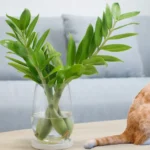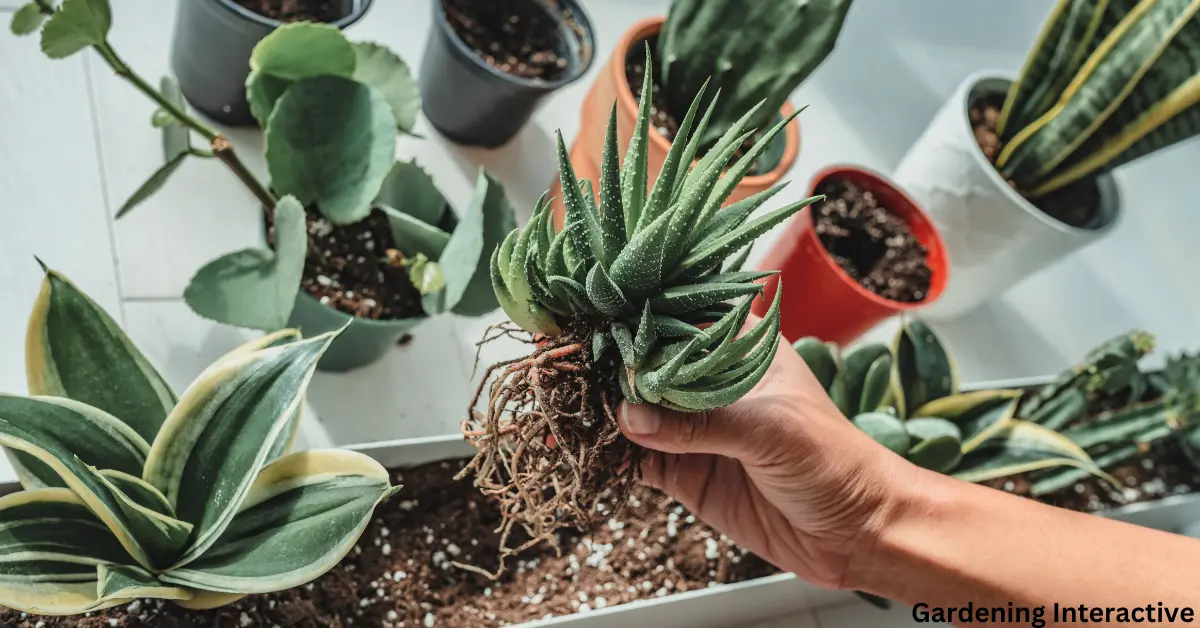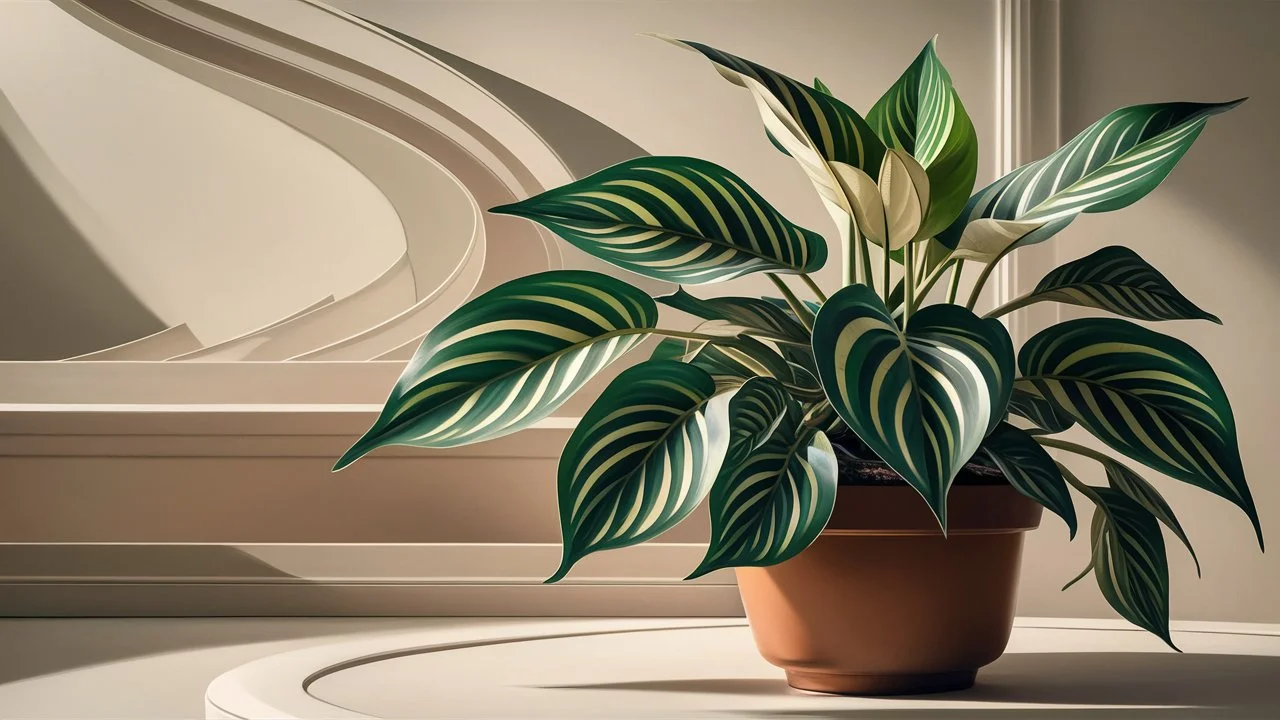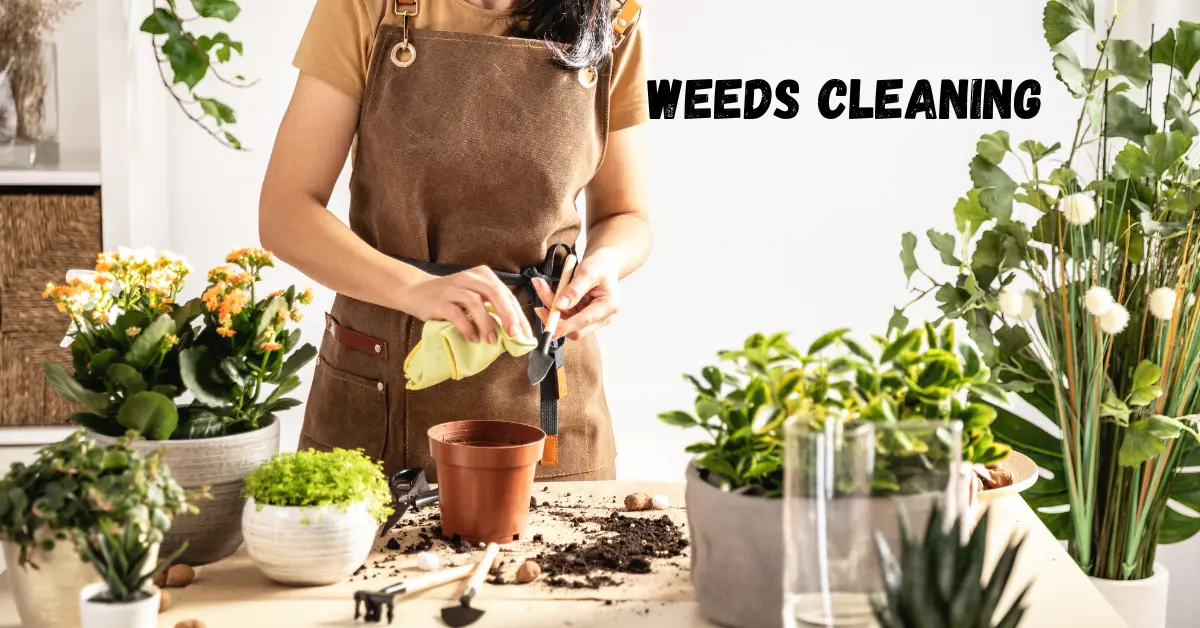
10 Best Indoor Plants: A Detailed Review
- Mitford Rakib
- March 25, 2024
- BEGIN YOUR ADVENTURE, Featured, Indoor plants
- 0 Comments
Table of Contents
ToggleEmbrace the Beauty of Indoor Plants: Detailed Information
Intro
Bringing the outdoors inside is more than just a trend – it’s a breath of fresh air for your home! Indoor plants not only add a touch of greenery but also offer a myriad of benefits, from improved air quality to reduced stress. In this guide, we’ll explore some easy-to-care-for indoor plants, their vibrant colors, and simple tips for keeping them grooming.
1. Spider Plant (Chlorophytum Comosum):
The spider plant, which has impressively raised leaves and colorful plants, prefers high light but may tolerate low light. It might generate “babies” in high light that you can cut off and replant to create new plants, but low light makes that less likely. You can stop watering it when it gets dry.

- Colors: Variegated green and white leaves.
- Care Tips: Spider plants are resilient and thrive in indirect sunlight. Keep the soil evenly moist, but don’t let it get soggy. They’re forgiving if you forget to water occasionally.
- Growth: Spider plants produce “babies” or offshoots, making them easy to propagate. Simply pot these babies in soil, and you’ll have more green companions in no time.
2. Snake Plant (Sansevieria Trifasciata):
It’s practically hard to kill snake plants! They simply require weekly watering and don’t mind low light levels at all. Actually, the most certain method to destroy this plant is to overwater it.

- Colors: Dark green, upright leaves with yellow or white accents.
- Care Tips: Snake plants are low-maintenance, thriving in low light conditions. Allow the soil to dry between waterings, and they can tolerate a variety of temperatures.
- Growth: Known for their air-purifying qualities, snake plants grow slowly and can reach impressive heights. They’re perfect for beginners and busy individuals.
3. Peace Lily (Spathiphyllum spp.):
True lilies do not resemble peace lilies. Native to tropical Central and South America, these are tropical evergreen plants belonging to the Arum family. On the forest floor, where they receive regular moisture and humidity as well as dappled sunlight, these plants bloom. Maintaining the happiness and health of your peace lily requires replicating these conditions within your house.

- Colors: Elegant white blooms against glossy green leaves.
- Care Tips: Peace lilies prefer low to medium light and consistently moist soil. They’ll droop when they need water, but perk up again after a good drink.
- Growth: These plants are excellent at removing indoor pollutants. Regularly removing spent blooms encourages new growth, and they can be divided to create more plants.
4. ZZ Plant (Zamioculcas Zamiifolia):
These striking, glossy plants are among the simplest for growing. They don’t require any frequent watering and can tolerate a range of light conditions. A couple weeks after it feels mostly dry, water the ZZ plant.

- Colors: Dark green, glossy, and waxy leaves.
- Care Tips: ZZ plants are resilient and can tolerate low light conditions. Allow the soil to dry between waterings, and they can thrive even with occasional neglect.
- Growth: ZZ plants grow slowly and are excellent for spaces with low light. Their upright growth habit adds a touch of sophistication to any room.
5. Pothos (Epipremnum Aureum):
Pothos is a really sturdy character. It works well in low light and even artificial light, though it likes medium light. It will tolerate cold, dry air just as long as you don’t overwater it.
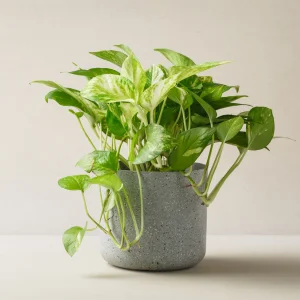
- Colors: Heart-shaped leaves in various shades of green, with variegation.
- Care Tips: Pothos is a forgiving plant that can thrive in various light conditions. Allow the top inch of soil to dry before watering.
- Growth: Pothos is a trailing plant that can be displayed in hanging baskets or placed on shelves. Pruning helps control their size, and cuttings can be easily propagated in water.
6. Aloe Vera (Aloe barbadensis miller):
The most popular houseplant is aloe vera, and its appeal is unparalleled. Americans adore cultivating it indoors. Succulent plants of the Aloe genus include Aloe vera. Thick, fleshy, greenish-green leaves emanate from the center stem of the stemless or short-stemmed plant. Little teeth make up the serrated edge of the leaf.

- Colors: Thick, succulent green leaves.
- Care Tips: Aloe vera thrives in bright, indirect sunlight. Allow the soil to dry completely before watering. Known for its healing properties, aloe vera is a useful and decorative addition to any space.
- Growth: Aloe vera offsets can be replanted for more plants. Keep an eye out for the mesmerizing blooms that may appear under the right conditions.
7. Rubber Plant (Ficus Elastica):
If you’re looking for a hardy yet relaxed indoor plant that can grow to incredible heights in a matter of years, the Rubber Plant (Ficus Elastica) might be the perfect choice. Even though young plants begin small, their glossy, bright leaves look wonderful in most houses and will quickly fill an empty spot.

- Colors: Dark green, glossy leaves.
- Care Tips: Rubber plants enjoy bright, indirect light and well-draining soil. Allow the soil to dry out between waterings. They’re relatively low-maintenance and can adapt to different light conditions.
- Growth: With proper care, rubber plants can grow into tall, statement-making trees. Regularly wiping their leaves keeps them dust-free and enhances their shine.
8. Boston Fern (Nephrolepis Exaltata):
The Boston Fern, scientifically known as Nephrolepis Exaltata, is a popular and elegant fern species cherished for its graceful fronds and air-purifying qualities. Originating from tropical regions, these ferns have found their way into homes worldwide, adding a touch of nature’s tranquility to various living spaces.
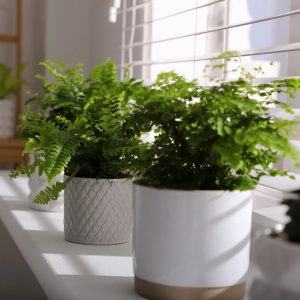
- Colors: Lush, feathery green fronds.
- Care Tips: Boston ferns thrive in bright, indirect light and high humidity. Keep the soil consistently moist but not waterlogged. Regular misting or placing a tray of water nearby helps maintain humidity.
- Growth: Known for their air-purifying qualities, Boston ferns are perfect for bathrooms or kitchens. They gracefully arch and can be divided for propagation.
9. Jade Plant (Crassula Ovata):
Along with succulents, panda plants, Christmas cacti, burro tails, and hens and chicks, Jade Plant also achieved great success. More intriguingly, though, is that Alaskans look for succulents more than any other type of indoor plant.
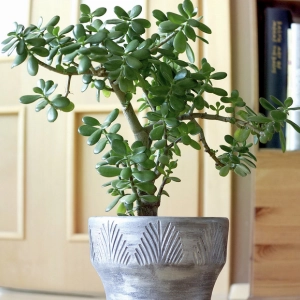
- Colors: Thick, fleshy green leaves with a hint of red.
- Care Tips: Jade plants prefer bright light and well-draining soil. Allow the top inch of soil to dry before watering. These succulents are drought-tolerant and easy to care for.
- Growth: With time, jade plants can develop a tree-like appearance. Pruning and propagating their sturdy leaves lead to more compact, bushy growth.
10. Fiddle Leaf Fig (Ficus lyrata):
The fiddle-leaf fig, or Ficus lyrata, is an excellent interior display plant. The plant grows a tall branch with very large, violin-shaped leaves that are extensively veined.
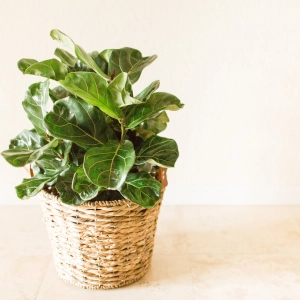
- Colors: Large, violin-shaped dark green leaves.
- Care Tips: Fiddle leaf figs thrive in bright, indirect light and well-draining soil. Allow the top inch of soil to dry before watering. They benefit from regular cleaning to keep their leaves dust-free.
- Growth: These striking plants add a touch of elegance to any room. Pruning and staking can help shape their growth, and they
Ending Note:
Indoor plants are living friends that bring the outdoors into our homes, not just decorative accents. Even individuals without green thumbs can reap the rewards of a healthier, greener living environment with these simple strategies and easy-to-maintain plants. So why hold off? Bring the outdoors inside, and watch as your house comes alive!

